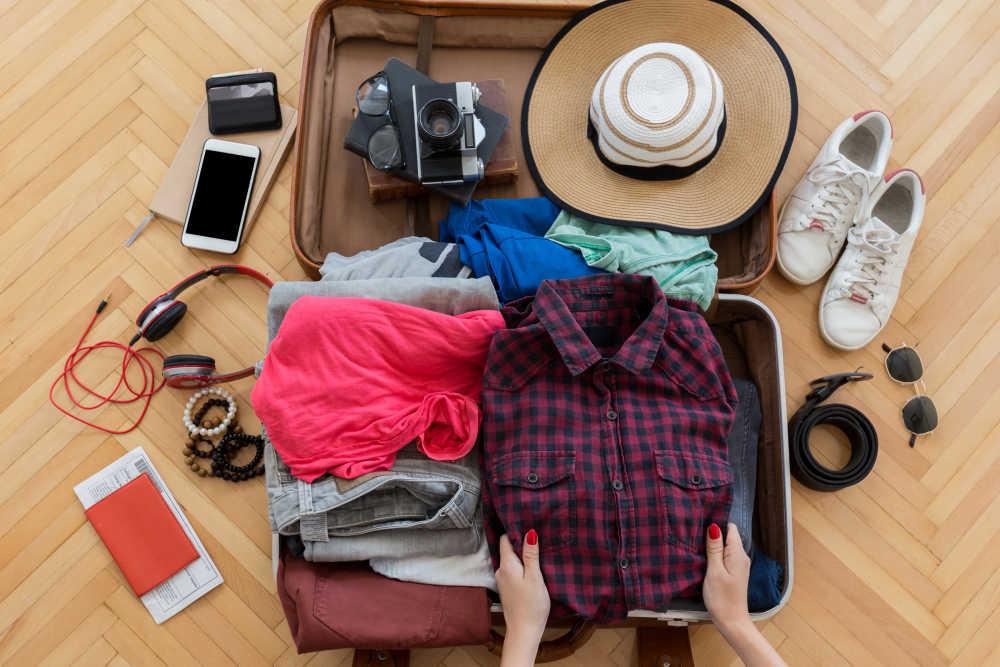When it comes to air travel, comfort, safety, and practicality are key — and what you wear on a flight can make a big difference in your overall experience.
According to indianexpress.com, to gain a deeper understanding, experts were consulted who advised that by selecting appropriate fabrics, layering effectively, and wearing practical footwear, passengers can be better equipped to handle the unique cabin environment and any unforeseen situations. “A little foresight in travel attire can greatly enhance passengers’ journey, making it safer, smoother, and more comfortable,” said Dhairyashil Vandekar, an aviation expert and analyst.
An aircraft cabin is a controlled but challenging environment characterised by low humidity, variable temperatures, and limited personal space. According to Vandekar, these factors necessitate careful attention to clothing choices. “Regardless of flight duration, whether short, medium, or long haul, passengers are advised to wear attire that balances comfort, utility, and readiness for rare but possible in-flight emergencies,” said Vandekar.
What is advisable?
Natural fibers such as cotton, merino wool, or modal are ideal due to their breathability, moisture-wicking capabilities, and lower flammability compared to many synthetic materials. “Wearing full-length trousers and long-sleeved tops offers protection against potential hazards such as hot surfaces, liquid spills, abrasions, or loose cabin debris. Dressing in layers enables passengers to adapt to fluctuating cabin temperatures. A breathable base layer, an insulating middle layer, and a lightweight, packable outer layer are particularly beneficial for longer or overnight flights. Female passengers may also find an oversized scarf or shawl useful, as it can serve as a blanket or a privacy cover when resting,” said Vandekar.
Avoid bulky coats that restrict movement in the seat, said Dr Hiran S. Reddy, consultant physician and critical care specialist at Gleneagles Hospital, Lakdi-ka-pul, Hyderabad. Closed-toe shoes are a vital aspect of air travel clothing. Dr Reddy noted that feet tend to swell at high altitudes, “Wearing slip-on shoes or sandals allows for easy removal without needing to bend uncomfortably. Avoid tight or high-heeled shoes.”
Vandekar emphasised that sandals, flip-flops, high heels, or other open footwear can hinder mobility and provide inadequate protection in emergencies. Instead, experts recommend slip-on shoes or supportive sneakers with sturdy soles for both comfort and safety. For flights lasting longer than three to four hours, especially for individuals at risk of circulatory issues, compression socks can help reduce the risk of deep vein thrombosis (DVT), a condition in which blood clots form in the deep veins, typically in the legs. “These socks promote blood circulation in the lower legs and reduce the risk of swelling and clot formation,” said Dr Reddy.
For their comfort and convenience, Vandekar advised passengers to wear minimal jewellery when flying. “Bulky or excessive accessories can delay security screening and increase the risk of loss or them getting misplaced in flight during turbulence or evacuation,” said Vandekar. In essence, dress for flights with an emphasis on circulation, temperature control, and freedom of movement, said Dr Reddy. “Making informed clothing choices not only ensures a more pleasant journey but also supports your overall health and well-being during air travel,” said Dr Reddy.

